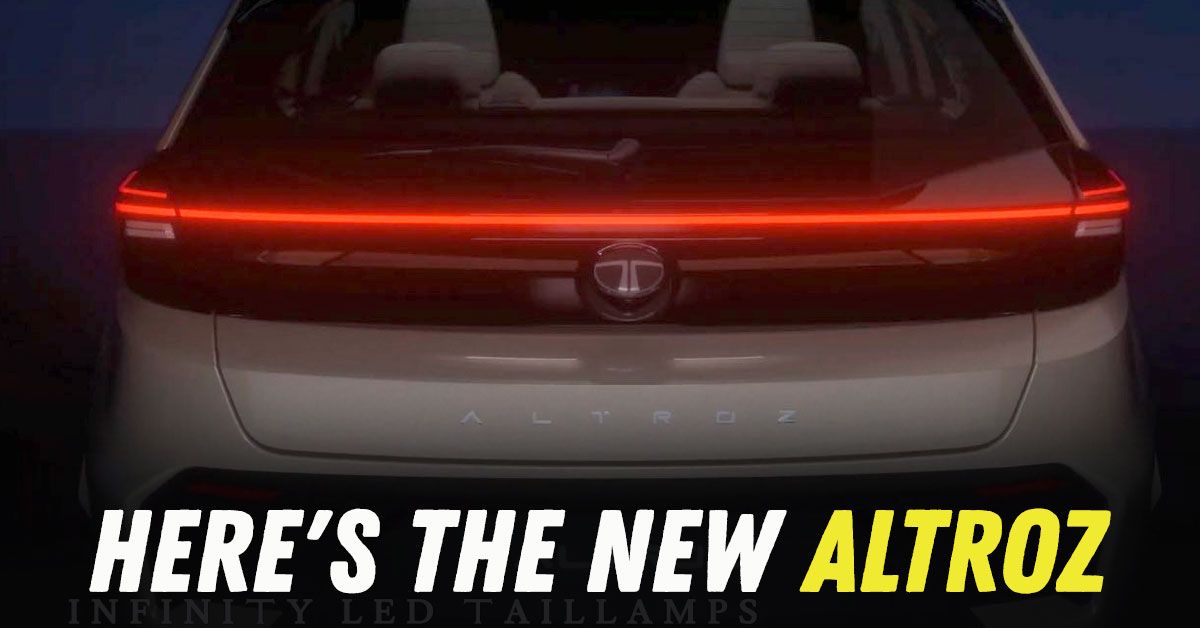5 Things To Know About The New Tata Altroz Launching Soon


Tata Motors is set to launch the updated Altroz on May 22, marking its first major facelift since its 2020 debut. The premium hatchback, known for its rigid build and diesel engine option, now gets modern design tweaks and tech upgrades to stay competitive. Here are the five most significant changes:
The Altroz replaces its conventional door handles with retractable, flush-fitting units inspired by Tata’s Curvv SUV. These handles sit flush with the body when not in use, reducing drag and creating a cleaner profile. Illuminated for nighttime convenience, they add a premium touch, though first-time users might need a moment to adjust. This design aligns the Altroz with global trends seen in luxury vehicles, signalling Tata’s push toward contemporary aesthetics without compromising functionality.
The split-headlamp design remains but now features fully LED units. The main clusters adopt square-shaped projectors, while the LED DRLs form an eyebrow-like strip, giving the car a sharper, more focused look. The grille gets a 3D hexagonal pattern, adding depth compared to the outgoing model’s flat design. The bumper below incorporates vertical recesses for fog lamps, replacing horizontal slots. These tweaks create a bolder face, bridging Tata’s current and future design language while maintaining the Altroz’s distinct identity.
Previously restricted to the Racer variant, the 10.25-inch freestanding touchscreen now extends to higher trims. It pairs with a new 10.25-inch digital instrument cluster borrowed from the Nexon, offering Google Maps integration. The interface remains intuitive, but the larger screen enhances readability and modernises the cabin. Physical climate control buttons make way for touch-sensitive panels, a polarising shift that prioritises sleekness over tactile feedback.
A first for the Altroz, the 360-degree camera system uses four cameras to generate a bird’s-eye view, simplifying parking in cramped urban spaces. The feature, already popular in Tata’s SUVs, includes dynamic guidelines that adjust with steering input. For a market where parallel parking often resembles a high-stakes puzzle, this addition could reduce stress-and repair bills-for daily drivers.
The cabin introduces redesigned seats with dual-tone beige upholstery and enhanced bolstering for better lateral support. While ventilation remains exclusive to the Racer variant, the focus on breathable materials and improved cushioning aims to boost comfort during long drives. The rear bench retains its 60:40 split but gains softer padding, and ambient lighting shifts from blue to white, creating a more understated premium vibe.
Mechanically, the Altroz retains its unique 1.5L diesel engine (90hp) and 1.2L petrol/CNG options. The turbo-petrol unit (120hp) stays limited to the Racer variant, leaving the manual transmission as the sole choice for now. Pricing is expected to start around ₹7 lakh, positioning it against the Hyundai i20 and Maruti Baleno. Tata’s decision to avoid mechanical overhauls suggests confidence in the existing platform’s balance of performance and efficiency.
The facelift addresses tech and design gaps, but challenges remain. Rivals like the Baleno and i20 dominate sales charts, partly due to smoother automatic transmissions and entrenched brand loyalty. However, Tata’s emphasis on safety-the Altroz holds a 5-star Global NCAP rating-and the diesel engine’s frugality could appeal to practicality-driven buyers. Initial feedback highlights divided opinions: some praise the fresh styling, while others find the redesign cluttered compared to the original’s clean lines.
By refining aesthetics and tech without overhauling mechanics, Tata seems to target urban buyers seeking a stylish, safe hatchback that stands out in traffic. Whether these updates can disrupt the segment’s hierarchy will depend on how well they resonate with a market that increasingly values both substance and flair.